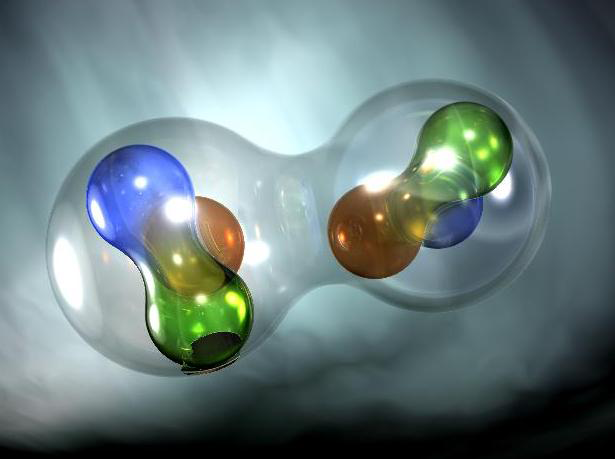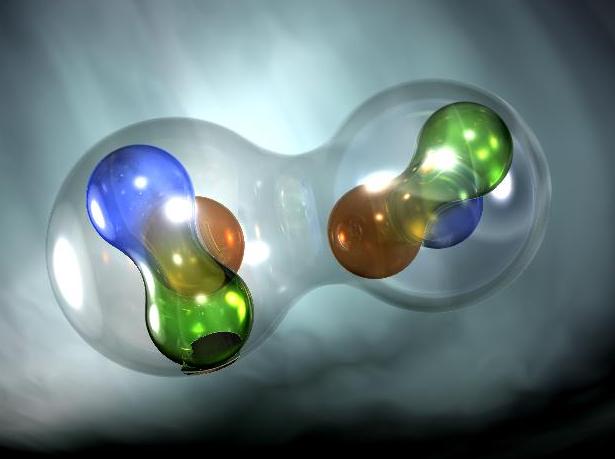Nucleon Pairing May Explain Nuclear Scattering Mystery
In 1983, scientists in CERN’s European Muon Collaboration made an unexpected observation: the internal structures of protons and neutrons are not the same in a crowd as they are in isolation. The team observed this effect in experiments in which iron and deuterium nuclei were bombarded with muons. Analyzing the nuclei’s scattering cross sections—their effective collision areas—the scientists found that they were smaller than expected if you summed the individual cross sections of all the nucleons (protons and neutrons) that make up those nuclei.
Dubbed the EMC effect after its discoverers, this not-the-sum-of-its-parts phenomenon has resisted explanation for nearly 40 years. But researchers now think they may have homed in on the physical basis of the effect. At the Fall Meeting of the APS Division of Nuclear Physics, Tyler Kutz of the Massachusetts Institute of Technology (MIT) and Tel Aviv University, Israel, presented preliminary results from experiments at the Thomas Jefferson National Accelerator Facility, Virginia, which suggest the cause is an interaction between pairs of nucleons. He and his colleagues have further work to do to confirm their initial findings, but they hope to make the data publicly available soon.
Since the initial observation, scientists have published thousands of papers on the EMC effect. Numerous explanations have been proposed, but scientists think there are just two viable causes. One is the so-called mean-field modification, where the structure of a nucleon is modified just by being in an environment containing other nucleons. The second cause is a modified interaction between short-range correlated pairs of nucleons resulting from their spatial overlap. Indirect experimental probes of the effect suggest the latter is the most likely cause. But, until now, there had been no direct test of the hypothesis, something the new experiments change.
In their experiments, Kutz and his colleagues bombarded a deuterium target with high-energy electrons. An electron can collide with either a neutron or proton inside a deuterium nucleus. Previous experiments only measured the scattered electrons, but with only this information, “you can’t really know whether you scattered off of a neutron or a proton,” Kutz says. To identify which nucleon was struck in a particular event, Kutz and his colleagues used detectors for both scattered electrons and recoiling neutrons. From these measurements, the team was able to reconstruct the distribution of quarks within the nucleon off of which the electron scattered and, importantly, the interaction between the proton and neutron pair.
The results suggest that the internal structure of a proton changes when a spatial overlap with a correlated neutron induces a strong short-ranged interaction between the two particles. “For the first time, we see indications of nuclear interactions affecting the quark distributions,” says Or Hen, Kutz’s postdoctoral supervisor at MIT and collaborator on the project. “That’s not something we ever had direct observations of before.”
As to why the short-range interaction causes the structure modification, Hen says that they don’t yet know. He suspects it relates to confinement effects from the overlap of the quarks when the two nucleons are in this strongly bound state, but models and further experiments will be needed to confirm that idea. Kutz agrees. “This [result] is a very exciting and tantalizing hint that we might be on to something.”
–Katherine Wright
Katherine Wright is the Deputy Editor of Physics Magazine.





